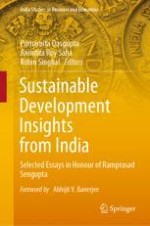2021 | OriginalPaper | Chapter
An Evaluation of Monetary Policy in India: A Sustainable Development Perspective
Authors : Ananya Ghosh Dastidar, Kajleen Kaur
Published in: Sustainable Development Insights from India
Publisher: Springer Singapore
Activate our intelligent search to find suitable subject content or patents.
Select sections of text to find matching patents with Artificial Intelligence. powered by
Select sections of text to find additional relevant content using AI-assisted search. powered by
